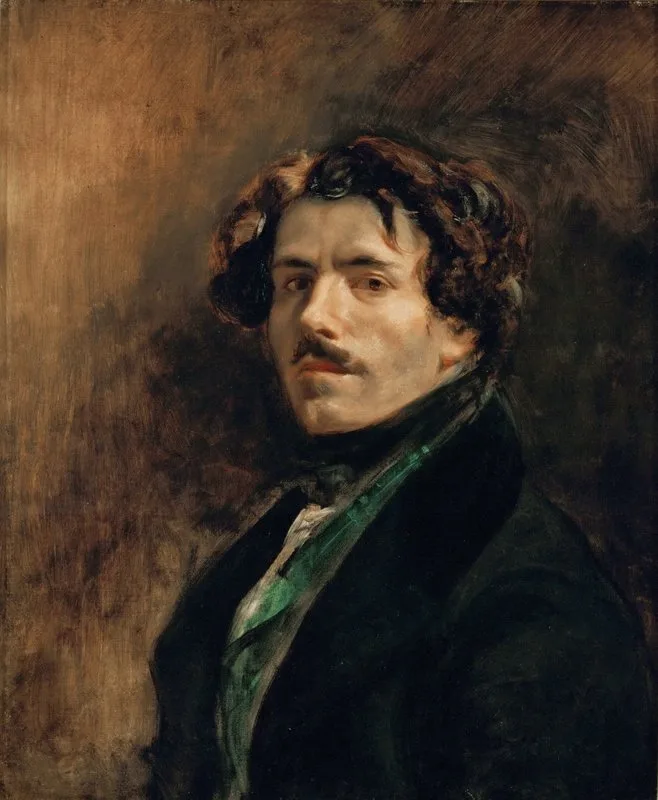
1798–1863
Movements
Occupations
Eugène Delacroix (1798–1863) stands as the defining figure of French Romanticism and a pivotal bridge to modernism. Born in Charenton-Saint-Maurice near Paris, he came from distinguished lineage—his mother descended from the prestigious Oeben-Riesener furniture dynasty, while persistent speculation suggested the statesman Talleyrand may have been his biological father, a theory supported by physical resemblance and lifelong government patronage. Delacroix revolutionized nineteenth-century painting by rejecting Neoclassical rigidity in favor of expressive color, dynamic movement, and emotional intensity. His 1822 Salon debut with "The Barque of Dante" announced a radical new aesthetic that challenged the precise linear approach of his rival Ingres. Instead, Delacroix drew inspiration from Rubens and Venetian Renaissance masters, prioritizing vibrant chromatic harmonies over academic draftsmanship. His masterworks—including "The Massacre at Chios" (1824), "The Death of Sardanapalus" (1827), and the iconic "Liberty Leading the People" (1830)—combined contemporary events with allegorical grandeur, establishing Romanticism's theatrical vocabulary. His career unfolded across three distinct phases. The years 1822–1834 witnessed his pursuit of novelty and fame through provocative subject matter. An 1832 journey through Morocco, Algeria, and Spain proved transformative, revealing what he perceived as Homeric nobility in North African culture and fundamentally enriching his palette. The period 1835–1855 brought prestigious mural commissions, including decorations for the Palais Bourbon and the Louvre's Galerie d'Apollon, culminating in his triumphant 1855 retrospective. His final years until 1863 saw increasing focus on landscape and memory's creative role. Delacroix developed groundbreaking techniques that anticipated Impressionism. His "flochetage" method—applying complementary colors side-by-side to mix optically rather than on the palette—prefigured scientific color theory. His vigorous brushwork, broken color application, and systematic study of light effects directly influenced Monet, Renoir, Manet, and later Van Gogh. Matisse called him "the father of modern painting" for liberating color from descriptive function. Producing approximately 9,140 works across paintings, drawings, pastels, and prints, Delacroix fundamentally transformed European art. His legacy demonstrates how individual vision can challenge and ultimately reshape aesthetic conventions, establishing the Romantic emphasis on personal expression that would define modern artistic practice.
Wikidata/Wikimedia Commons